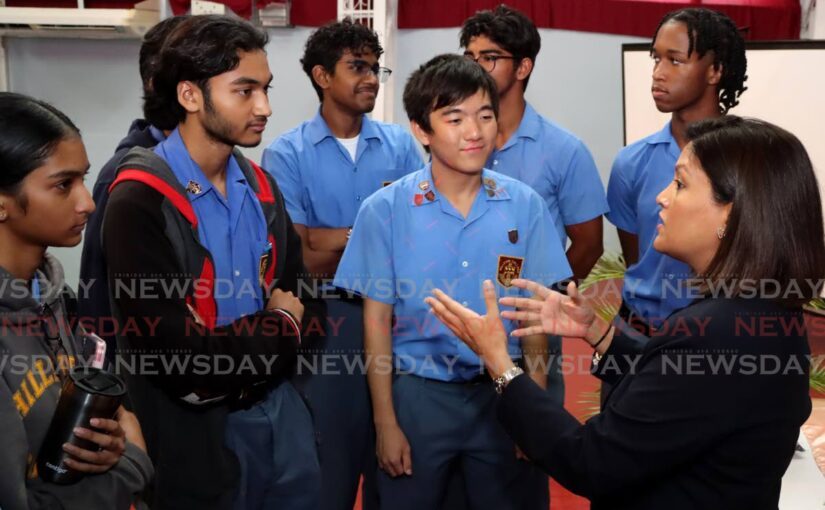Every place in the world is "a destination" that someone might want to visit for one reason or another. Usually, locals do not view their space in...
Vous n'êtes pas connecté
- English
- Français
- عربي
- Español
- Deutsch
- Português
- русский язык
- Català
- Italiano
- Nederlands, Vlaams
- Norsk
- فارسی
- বাংলা
- اردو
- Azərbaycan dili
- Bahasa Indonesia
- Հայերեն
- Ελληνικά
- Bosanski jezik
- українська мова
- Íslenska
- Türkmen, Түркмен
- Türkçe
- Shqip
- Eesti keel
- magyar
- Қазақ тілі
- Kalaallisut ; kalaallit oqaasii
- Lietuvių kalba
- Latviešu valoda
- македонски јазик
- Монгол
- Bahasa Melayu ; بهاس ملايو
- ဗမာစာ
- Slovenščina
- тоҷикӣ ; toğikī ; تاجیکی
- ไทย
- O'zbek ; Ўзбек ; أۇزبېك
- Tiếng Việt
- ភាសាខ្មែរ
- རྫོང་ཁ
- Soomaaliga ; af Soomaali
Rubriques :
 Maroc - EURASIAREVIEW.COM - A la une - 18/Sep 22:19
Maroc - EURASIAREVIEW.COM - A la une - 18/Sep 22:19
Highly-Sensitive Beaks Could Help Albatrosses And Penguins Find Their Food
Researchers have discovered that seabirds, including penguins and albatrosses, have highly-sensitive regions in their beaks that could be used to help them find food. This is the first time this ability has been identified in seabirds. An international team of researchers, led by the University of Cambridge, studied over 350 species of modern birds and found that seabirds have a high density of sensory receptors and nerves at the tip of their beaks, which has been previously identified in specialised tactile foragers such as ducks. The researchers say this touch-sensitive region could have come from a common ancestor, and further work is needed to determine whether it serves a specific function in modern birds. Further study of their beaks and food-gathering behaviour could help conserve some of these birds, many of which are at threat of extinction. The results are reported in the journalBiology Letters. In the same way as humans and other primates use their hands, birds use their beaks to interact with the world around them. Some birds have specialised touch-sensitive areas at the tips of their beaks to help them find food, but since this ability has not been widely studied, it’s not known how the phenomenon evolved or how widespread it is. “Many scientists had assumed most birds had touch-sensitive beaks, but we hadn’t investigated it enough to know whether it’s a common ability, or whether it’s limited to particular families of birds,” said lead author Dr Carla du Toit from Cambridge’s Department of Earth Sciences. One group that hasn’t been well studied is the largegroup of seabirds called Austrodyptornithes, which includes albatrosses, petrels, and penguins. Since many of the bird species in this group are critically endangered, understanding how they find their food using their beaks could be a valuable tool to aid in their conservation. Du Toit and her colleagues from the UK and South Africa conducted a study of 361 modern bird species, based on fossil and skeletal records, as well as birds that had been accidentally killed by fishing lines and nets. The team focused on the beaks of these birds, how they are constructed and connected to their nerves and blood vessels. The researchers found that albatrosses and penguins have organs with high density sensory receptors and high concentrations of nerves in their beaks, which is more common in specialised foragers such as ducks. This is the first time that this functionality has been observed in seabirds. “Seabirds aren’t known to be tactile foragers, so it’s surprising to find that they have this organ,” said du Toit. “It’s really exciting when you get to be the first to see something.” These touch-sensitive beaks might help seabirds find food at night or underwater, as they might enable the birds to detect tiny vibrations from potential prey. Some birds that are already known to have touch-sensitive beaks use them to detect tiny underground vibrations from worms, for example. However, these sensitive areas could also be a ‘leftover’ trait from a common ancestor that doesn’t have a specific function in modern birds, like the beaks of ostriches and emus. Further studies in live birds will be needed to establish the exact purpose of these touch-sensitive areas, which may also help determine how the ability evolved. “In humans and other primates, our sensitive hands and fingers allowed us to master a huge range of environments,” said du Toit. “Beaks are analogous to hands in a way, but this is the first time we’ve seen touch-sensitive beaks in seabirds. It’s remarkable that no one has ever really studied this in detail, considering that we all learn about evolution from the beaks of Darwin’s finches in school.” The researchers say their findings could potentially play a role in conserving some of these birds. Of the 22 known species of albatross, 15 are threatened with extinction and two are listed as critically endangered. One of the big threats to albatrosses is commercial longline fishing, which kills an estimated 100,000 of the birds per year, when they get tangled in the lines and drown. According to du Toit, if scientists can better understand how these birds get their food, it could be used to help protect them. “Much further work is needed, but if albatrosses and other seabirds are able to detect vibrations from potential prey via their beaks, it could be possible to attach some sort of device to longlines that could repel them, so they are less likely to get caught,” said du Toit. “Of course, the bigger threats to birds like albatrosses are climate change, rising ocean temperatures, plastic pollution and falling fish stocks, but if there’s a way to reduce the risks to seabirds in even a small way, then that’s incredibly valuable. These are such special birds and I’ve been interested in them for as long as I can remember.”
Articles similaires
Patent Monopolies And PBMs: Protectionism Leads To Corruption – OpEd
Last week I saw a somewhat shabbily dressed man in the pharmacy trying to get a Covid booster. They told him it would cost $130. (It was the Moderna...
Why Kamala Harris Lost and How Donald Trump Won: A Deep Analysis of the 2024 US Election(OPINION)
By Ifeanyi AbrahamGlobal PR and Communications Strategist; Co-Founder The Diverse Business and Tech Summit, FindBlackExperts, Techsoma and...
5 Ways To Ensure You’re Recycling Properly In Toronto
In the wake of a too-warm winter, a truly sweltering summer, and heavy rain days, environmental care has been at the top of everyone’s minds in...
2024/25 Ghana Premier League: Week 8 Match Preview - Young Apostles vs. Dreams FC
Ghana Premier League newcomers Young Apostles FC are determined to bounce back to winning ways as they host struggling Dreams FC in an intense...
Unilin to start recycling MDF on an industrial scale
Backed by a €20 million investment, Unilin is set to start recycling MDF on an industrial scale at its site in Bazeilles, France. This represents a...
Virtual reality the way forward for training
A training program where new forestry recruits learn to make crucial thinning decisions through immersive virtual reality simulations of forests could...
Snap school poll: Youth want to leave Trinidad and Tobago
IN a school hall filled with 200 pupils, about half of them indicated they wished to leave Trinidad and Tobago to study, and of these only one said...
Meet The Commercial Agent: Susan Iriarte, Royal LePage Real Estate Services Ltd.
Welcome to Meet the Agent, an ongoing series profiling real estate agents from across Canada. With more than 150,000 agents, brokers, and salespeople...
10 smallest and most beautiful birds in the world
Explore the world of small, mesmerising birds. These tiny wonders captivate with their vivid colours, unique features, and charm. Here are 10 of...
Les derniers communiqués
-
Adobe Brings Conversational AI to Trillions of PDFs with the New AI Assistant in Reader and Acrobat
Adobe - 21/02/2024
-
Laura Frigenti takes the Helm as Chief Executive Officer of the Global Partnership for Education
Global Partnership for Education - 05/12/2022





